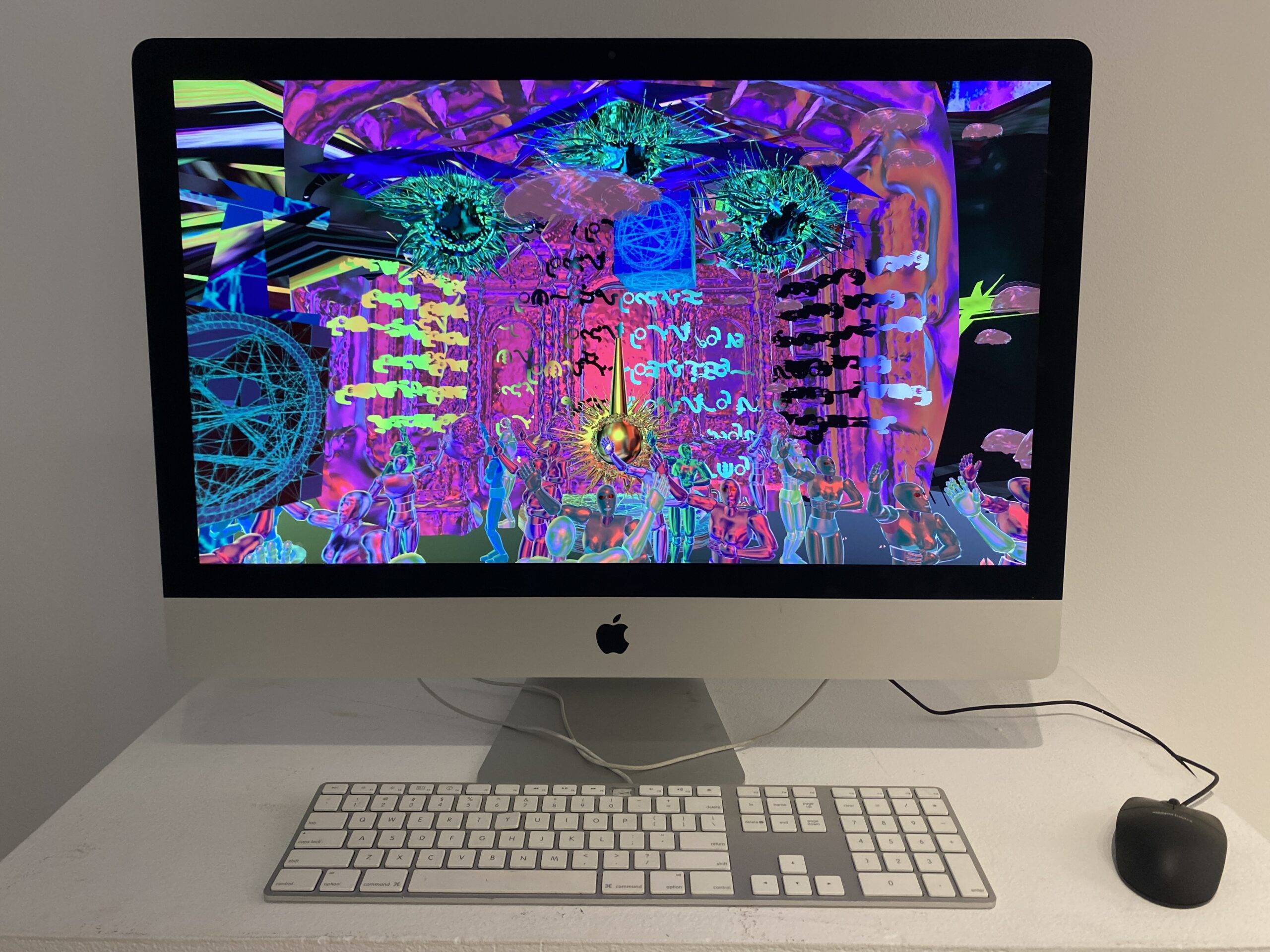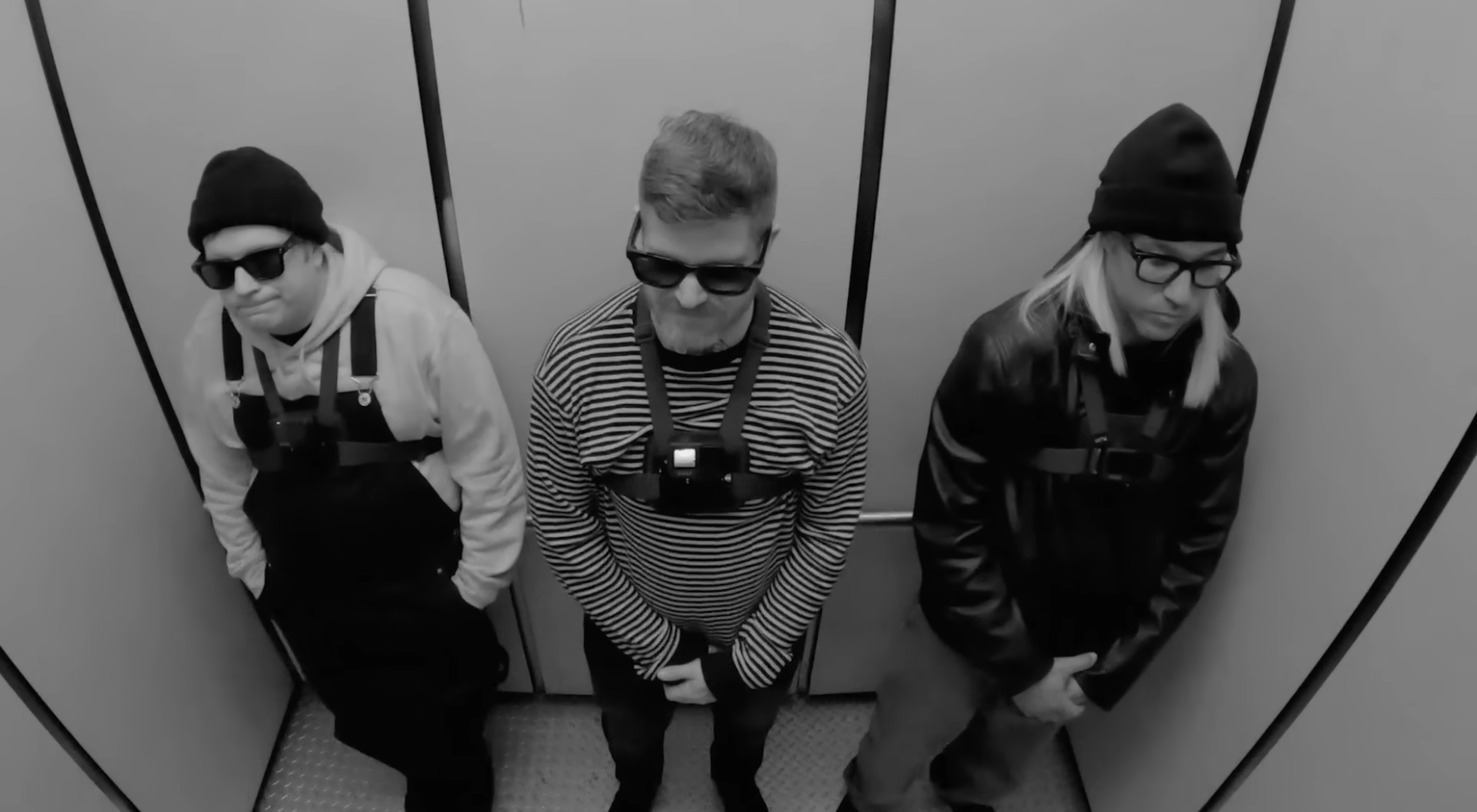Among the diversity of interdisciplinary media at the School of the Art Institute of Chicago’s Spring Undergraduate Exhibition 2023, the theme of cultural identity prevailed in many of the over 200 young artists’ endeavors, be it an exploration of self within a collective or a homage to cultural heritage. With the emergence of new media and technologies, there were a handful of video and interactive works at the exhibit, which was on view from April 7-15. Nicole Chan Javellana, in particular, a graduating BFA student, epitomized this combination of cultural identity and new media, infusing subtle messages into a comprehensive and cohesive body of work.
Javellana works with 3D modeling, creative technology, game engine simulation, net art, visual performance, and more. “Her practice is grounded in decolonizing her Filipino heritage by revitalizing indigenous motifs and practices,” as she writes on her website. “Javellana’s work aims to create trans-digital spaces for indigenous Filipino knowledge to flourish in a modern world. Through experimentation with virtual and augmented realities, game engines, and fabrication, Javellana continues to create immersive technological experiences with her ancestral understanding in mind.”
Situated in an intimate gallery space, Javellana curated and showcased “Ang Sinugdanan,” four interactive new media installations. Denoting “the beginning” in the Cebuano language, she celebrates her “research, rediscovery, and revitalization of indigenous Filipino cultures through new media and creative technology practices.”
This installation begins with “Ikaw Ang Araw; You Are the Sun” (2022). This two-minute, single-channel video sets the tone and backdrop for the installation. This compact work summarizes her artistic methodology where it shares motifs — elements of astrology, cartography, indigenous language, and digital arts — with her other three works.
In “Sa Pamamagitan Ng Salamin; Through the Glass” (2023), Javellana utilizes an augmented software mirror — introduced by Doug Rousman, the instructor of “Introduction to Computer Vision” — to invite interactions with visitors. With p5.js programming — a JavaScript library for creative coding, the webcam captures visitors’ hand gestures and generates wobbling texts around users’ hands through the custom-built program. When visitors come in proximity, the program will juxtapose jewelry on the user’s face on screen. Javellana’s affinity for jewelry and its traditional spiritual usage facilitates her reference in Visayan gold-making and Tagalog Maginoo dress.

“My Kamagi” (2023) continues this exploration of indigenous Filipino jewelry. Interactivity in this work encourages audiences to get in touch, literally, with indigenous culture. The 3D printed jewelry connects with an Arduino microcontroller, which enables visitors to activate sound clips that she produced with original samples of the Kudyapi — a two-stringed lute — through touching.
The highlight of Javellana’s installation is “Peace Be With You” (2022-23). This sophisticated 3D interactive game simulation explores historical complications caused by Spanish colonization in the Philippines. Similar to the colonial invasion in the Americas, the Philippines also suffered from colonial oppression and erasure through religious practice for over three hundred years. Catholicism, in particular, largely uprooted indigenous spiritual practices. Witnessing this violent injustice, Javellana develops a game simulation to address these issues through religious and technological lenses.

Connecting further with her own upbringing, she 3D-modeled the actual altar at St. James the Great Parish in Muntinlupa, where she had been baptized. The modified altar appears in a kaleidoscopic cathedral, where simulated worshippers pack the whole space. Users can shed the golden beam from the holy scepter through the cursor toward a certain faith seeker. The character will then attain religious ecstasy and eventually proceed to ascension. The ending, however, poses a question of “where are they actually heading.” As much as it appears highly chromatic, this setting is not unlike a dystopia where blind faith leads followers to nowhere. Putting this historic complication into a game simulation is a very subtle interrogation of harm caused and left over by colonizers. Instead of explicitly telling the story, the game invites and draws viewers closer to reflect on this piece of violent history.
Besides her ambitious explorations in research, cultural history, and new media installation works, Javellana also excels in visual performances as a VJ. She has participated in two recent experimental theater productions by the //sense collective in the MacLean Ballroom and {\} () {\} ∆ ‡ | () {\} (No Nation Art Lab). Continuing her current interest, she will be working at a Launchpad Internship for creative technology and planning to explore more freelance audiovisual performances as a VJ.
Check out https://www.havelyana.com/ for more.







